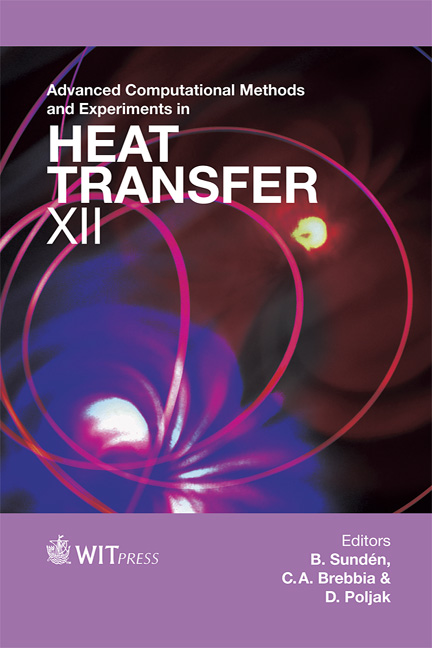Experimental Study Of Cold Inflow And Its Effect On Draft Of A Chimney
Price
Free (open access)
Transaction
Volume
75
Pages
10
Page Range
73 - 82
Published
2012
Size
496 kb
Paper DOI
10.2495/HT120071
Copyright
WIT Press
Author(s)
C. Chi-Ming Chu, R. Kwok-How Chu & M. M. Rahman
Abstract
This paper aims to study the cold air inflow into a natural draft air cooled heat exchanger chimney. In total, seven configurations of experiments were carried out in the prototype natural draft air-cooled heat exchanger model for two different supplied heat loads at approximately 0.75 kW to 1.25 kW to determine the effects of wire mesh screen in the chimney performance. Temperature and velocity were measured for the configurations and heat loads. It was found that the Top-only, Top-and-Middle, and Middle-only installations were able to maintain draft velocities to within 3.0 % of the control experiment draft velocity, in spite of the resistance of the mesh. It was also found that configurations utilising mesh at the bottom had experienced a drop in draft velocity by up to 50% from the Control. The smoke flow visualisation tests clearly proved that cold air inflow phenomenon exist, and can be countered with the installation of wire mesh at the top of the model. Keywords: cold inflow, natural draft, heat exchanger, smoke visualisation, wire mesh. 1 Introduction In the natural draft air cooled heat exchanger (NDACHX) or cooling tower, the hot air continuously flows in the upward direction and the cold air enters from bottom. The airflow is due solely to local buoyancy differences caused by the presence of temperature difference between process side and ambient. However, in the forced convection process, a fan is placed either at the bottom or above the tube bundle to increase airflow rate to remove waste heat. In certain appliances, natural draft air cooled heat exchanger has the advantage in terms of operational
Keywords
cold inflow, natural draft, heat exchanger, smoke visualisation, wiremesh.





